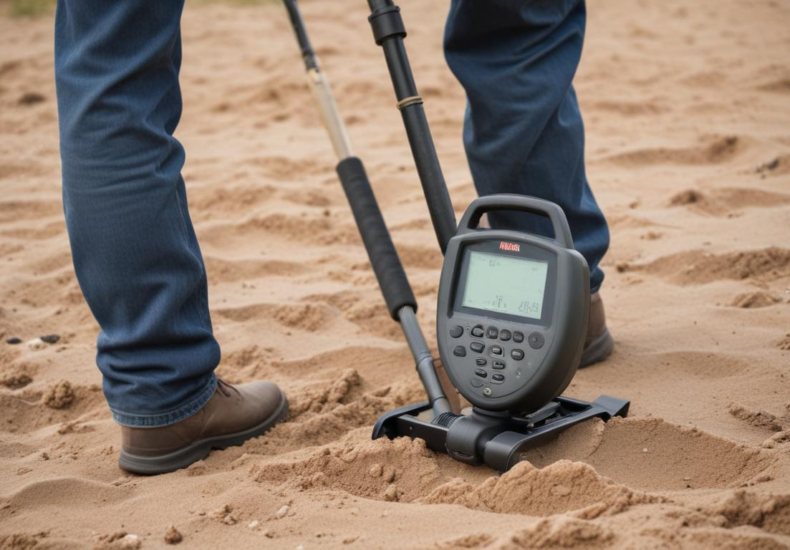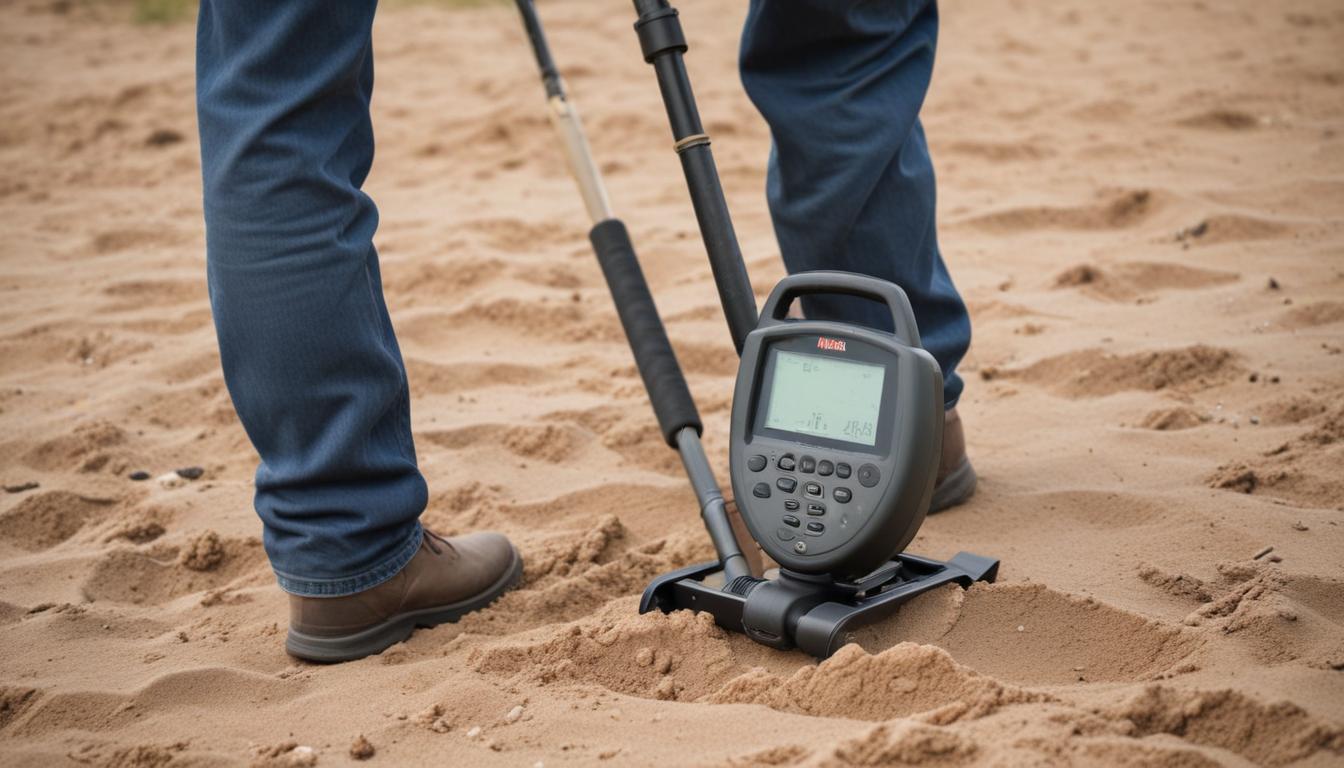
How to keep your metal detector safe on the go
When selecting the right carrying case for your metal detector, ensuring maximum protection as you travel is essential. Start by looking for a case that offers a sturdy exterior shell. Hard cases made of materials such as polycarbonate or aluminum are often preferred for their ability to withstand knocks and drops that can occur during travel. These materials also offer superior weather resistance, protecting against rain, dust, and extreme temperatures.
Inside the case, padding is crucial. Look for dense foam or specialized inserts that conform to the shape of your metal detector and its accessories. This padding prevents the device from moving or shifting within the case, which is vital for avoiding scratches or internal damage to the equipment. Additionally, consider the case’s internal layout. There should be enough room not only for the metal detector but also for essential accessories such as headphones, coils, and digging tools, ideally separated by padded dividers.
For those who frequently fly with their metal detectors, checking airline regulations is recommended. A wheeled case with reinforced corners and TSA-approved locks can ease travel while offering metal detector protection and peace of mind. Assess whether the case is equipped with ergonomic handles and straps because comfort in transport is as crucial as the safety features.
Lastly, consider the weight and volume of the case itself. Even though robust protection is necessary, the case should not be excessively cumbersome, making it hard to manage on longer trips or when navigating through crowded areas. Choosing a well-designed case that balances durability, protection, and portability is among the most effective travel tips for metal detector enthusiasts.
Using protective covers and skins
To further enhance your metal detector protection while traveling, utilizing protective covers and skins is highly advantageous. These accessories serve as an additional barrier against environmental hazards, scratches, and minor impacts that might not be fully absorbed by the carrying case alone. Protective covers are typically made from durable materials like neoprene or nylon, which not only safeguard the metal detector but also maintain its appearance by preventing wear and tear.
One key advantage of using skins is their ability to offer a custom fit. These skins hug the contours of your metal detector closely, ensuring that every inch of the surface is covered and protected from direct exposure to harmful elements such as sand, mud, and water splashes. For those who often detect in harsh weather conditions or rugged terrains, these protective measures can significantly extend the lifespan of the device.
Moreover, protective covers and skins are usually designed with functionality in mind, allowing easy access to the device’s controls and ports without needing to remove the cover completely. This feature proves particularly beneficial during unpredictable weather, providing quick protection without disrupting your metal detecting activities.
Aside from their protective features, covers and skins are also lightweight and easy to stash away when not in use, making them an ideal addition to your travel gear. Their ease of use and low profile make them must-have items for both casual hobbyists and dedicated treasure hunters alike. When paired with a solid carrying case, these protective accessories play a crucial role in ensuring your metal detector is shielded from the myriad of challenges posed by outdoor environments.
Remember, the combination of a sturdy carrying case and quality protective cover or skin constitutes an essential strategy in metal detector care, especially during travel. Implementing these travel tips will enable you to enjoy your adventures without worrying about the safety of your valuable equipment.
Tips for transporting batteries and accessories
When it comes to transporting batteries and accessories for your metal detector, proper management and safety are crucial. Batteries, in particular, are an essential component that must be handled with care to ensure longevity and safety. Firstly, always store batteries in a cool, dry place separate from the metal detector. This reduces the risk of corrosion or unwanted reactions. If traveling by air, it’s important to check with the airline regarding their policy for carrying batteries, as most have specific regulations that must be followed.
In addition to safety, organizational tips can greatly streamline your setup. Use battery cases or specific compartments in your carrying case to hold each battery securely. This prevents the batteries from coming into contact with metal objects or each other, which could lead to short circuits. It’s also beneficial to carry spares in an accessible part of your travel bag, ensuring you never miss out on using your metal detector due to power issues.
Furthermore, for those using rechargeable batteries, carrying a compatible charger is a must. Ensure that the charger is also carried safely, preferably in the same section as your batteries, and remember that some chargers need adaptors or converters depending on your travel destination. Planning your energy use by estimating how much you’ll likely need each day can help in not carrying more than necessary, which can lessen your load during travel.
Accessories such as coils, digging tools, and headphones also need careful consideration. Wrap cables neatly to prevent tangling and use protective bags or compartments for delicate items like headphones and additional coils. Separate storage solutions, like pouches or sections within your carrying case, can prevent accessories from scratching or damaging each other or the metal detector itself. These travel tips help not only in protecting your equipment but in maintaining an easily manageable gear setup.
Overall, efficient packing of batteries and accessories using these strategies enhances the overall experience and ensures metal detector protection while on the go. By securing these vital components, you can focus more on your treasure hunting adventures with peace of mind.
Security measures during travel

When embarking on travels with your metal detector, implementing specific security measures can be crucial for safeguarding your device. It’s essential to be aware of your surroundings and maintain a low profile to avoid attracting unnecessary attention to your valuable equipment. Consider using nondescript carrying cases that don’t blatantly hint at the contents inside, thus deterring potential thieves.
Moreover, it’s advisable to keep your metal detector with you as carry-on luggage if possible when flying. Most airlines allow this as long as your equipment meets the standard size restrictions for carry-on items. Having your metal detector close by reduces the risk of it being damaged by rough handling or lost during cargo transit. If checking the device is unavoidable, make sure it’s securely locked and well-protected inside a hard-shell case.
For added security during travel, you might consider investing in a tracking device. These devices can be discreetly attached to your metal detector or its case, allowing you to monitor its location via GPS. This can be especially useful in recovery if your equipment is lost or stolen. Additionally, always make sure that your travel insurance covers the full value of your metal detector, providing an extra layer of financial security in case of unfortunate events.
Lastly, whenever you are traveling by car, keep your metal detector out of plain sight when unattended. Store it in the trunk or a covered area of the vehicle. Park in well-lit, busy areas where there’s less likelihood of burglary. These preventative measures are simple yet effective at enhancing your metal detector protection and can provide significant peace of mind while you enjoy your explorations.
By taking these security considerations into account and adhering to smart travel tips, you can minimize risks and ensure that your metal detector remains safe no matter where your adventures lead you.
Regular maintenance and storage tips
To ensure your metal detector serves you well and has a long lifespan, regular maintenance and proper storage are imperative. After each use, especially in rough or muddy environments, clean your metal detector meticulously. Start by wiping down the body and handle with a soft, damp cloth to remove dirt and debris. If sand or dirt is lodged in crevices or buttons, use a soft-bristled brush like an old toothbrush to gently clean these areas without damaging the controls. Avoid using harsh chemicals or abrasive cleaners that can harm the metal detector’s finish or electronic components.
For further care, periodically check the connections and cables for any signs of wear or damage. Ensure that all fittings and screws are tight and in good condition, as loose parts can worsen with use and travel vibrations. Applying a mild lubricant to hinges or foldable parts can prevent rust and make the deployment of your metal detector smoother, contributing to better overall functioning during your searches.
Concerning storage, it’s crucial to keep your metal detector in a cool, dry place when not in use. Exposure to extreme temperatures or moisture can severely damage the electronics or lead to metal corrosion. If possible, hang the metal detector on a hook or stand to avoid pressure on any one point that could misshape the frame or casing. For long-term storage, cover the metal detector with a breathable cloth or store it in its carrying case to protect it from dust and other environmental hazards.
Additionally, remember to remove batteries between uses if they are not rechargeable. This prevents battery leakage and corrosion from damaging the device. If your metal detector uses rechargeable batteries, it is advisable to ensure they are fully charged and stored in a cool, dry place as well. This helps in maintaining battery health and ensures readiness for your next metal detecting adventure.
By incorporating these travel tips and regular maintenance routines into your schedule, your metal detector protection is enhanced, and its operational lifespan extended. Such practices not only keep the metal detector in prime condition but also prepare it for reliable performance each time you head out hunting for treasures.
You may also like
Archives
Calendar
| M | T | W | T | F | S | S |
|---|---|---|---|---|---|---|
| 1 | 2 | |||||
| 3 | 4 | 5 | 6 | 7 | 8 | 9 |
| 10 | 11 | 12 | 13 | 14 | 15 | 16 |
| 17 | 18 | 19 | 20 | 21 | 22 | 23 |
| 24 | 25 | 26 | 27 | 28 | 29 | 30 |
Leave a Reply